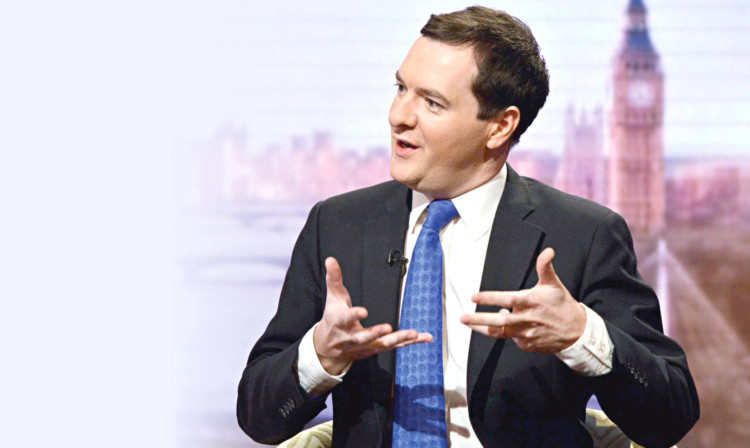
A bid to persuade people to top up their state pensions is in disarray after a new poll showed the majority of pensioners don’t think it is worth it.
Chancellor George Osborne’s plan is meant to offer a boost to those who struggled to build up full entitlement to the state pension during their
working lives, even if they have already retired.
But a new Department for Work and Pensions (DWP) survey shows just one in six pensioners would take up the one-off chance to “buy” extra state pension worth
hundreds of pounds a year.
The poll shows the majority of respondents are not interested in the deal, claiming it comes too late to make a difference to their own pensions.
The DWP last night said the plan is voluntary and mainly targeted at women who may have missed periods of paying national insurance because they were raising a family.
Gregg McClymont, Labour’s pensions spokesman, said: “This poll shows yet again one of the Government’s flagship pension policies is in disarray. It comes in the same week the DWP’s assessment of the impact of a pension charge cap was given a red card by the independent body set up by the Government to scrutinise
regulation.
“There seems to be no end to the Government’s inability to do its homework on the issues that matter to pensioners.”
The poll was commissioned to assess the likely take-up of additional voluntary national insurance contributions and involved existing pensioners and those who will reach state pension age by 2016.
Spread across four age categories, the poll gave a high and low scenario for the cost of paying additional contributions and how much this would buy in extra pension
pay-outs.
For the higher price option of the scheme, 14% of people were either very interested or fairly interested but 57% indicated they were not at all interested. A further 27% were “not very interested” and the rest did not know.
At the lower price option, a total of 15% of people were either very interested or fairly interested, 51% were not at all interested and a further 31% were “not very interested”. A further 4% did not know.
Being unable to afford the top-up, a desire to invest the money elsewhere and not living long enough to enjoy the benefit were among the other reasons given for rejecting the new approach.
The new state pension top-up scheme is expected to launch in October next year and will be “time limited”. It will be open to those who reach pension age before 2016.
The new flat-rate state pension worth £144 a week, if you have built up 35 years of National Insurance contributions, comes into force from April, 2016.
A DWP spokeswoman said: “This is a targeted measure to help people boost their state pension, specifically women and the self-employed who have not had the opportunity to build up additional state pension. It may not be for everyone, which is why it’s a voluntary measure.”
SNP MSP Kenneth Gibson said: “This is the latest in a long line of policy blunders from a Tory Government which is letting Scotland’s pensioners down. George Osborne the man who introduced what became known as the ‘Granny Tax’ wants today’s pensioners to pay more for their pension.
“No wonder pensioners are giving this latest plan the big thumbs down.”

Enjoy the convenience of having The Sunday Post delivered as a digital ePaper straight to your smartphone, tablet or computer.
Subscribe for only £5.49 a month and enjoy all the benefits of the printed paper as a digital replica.
Subscribe